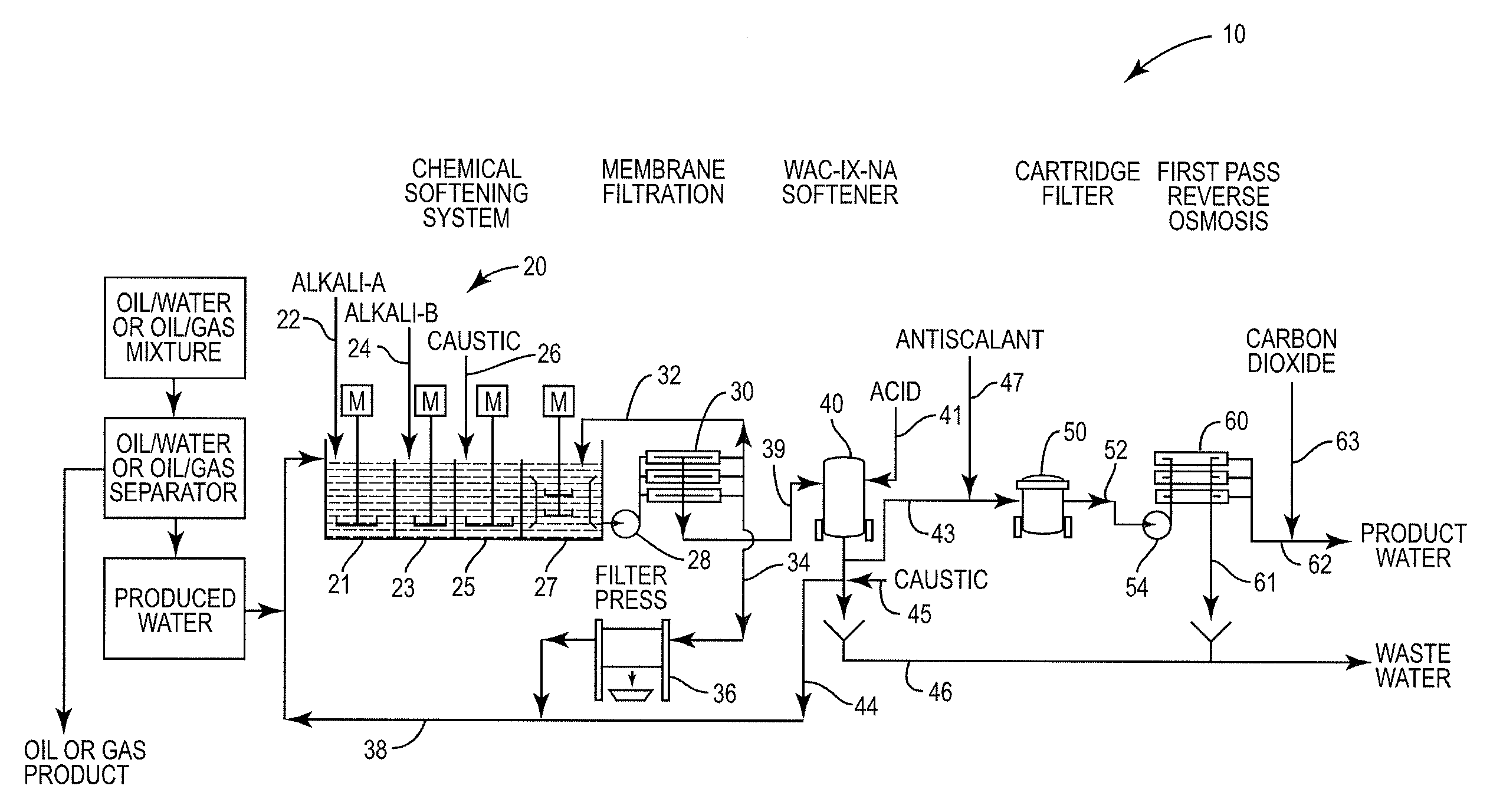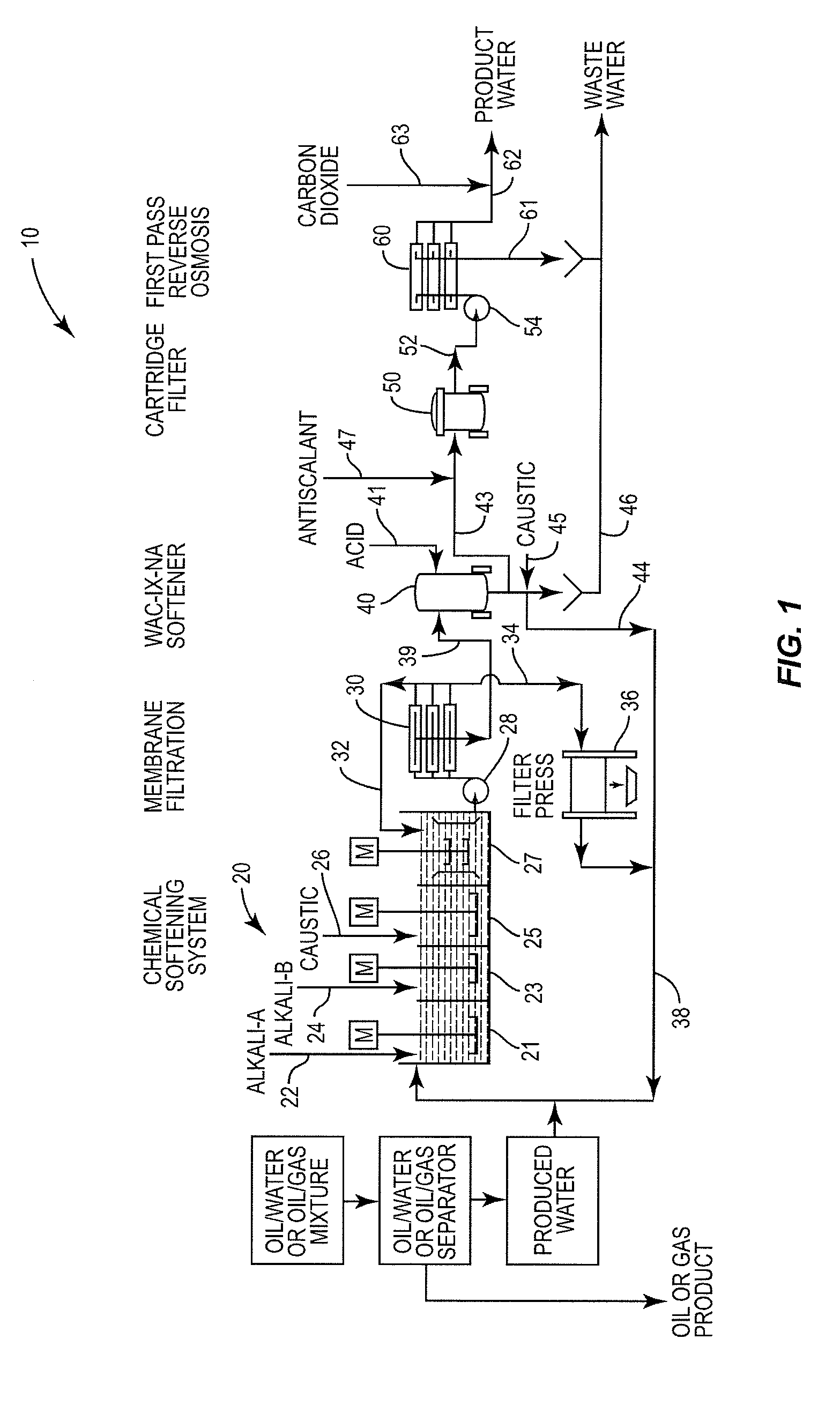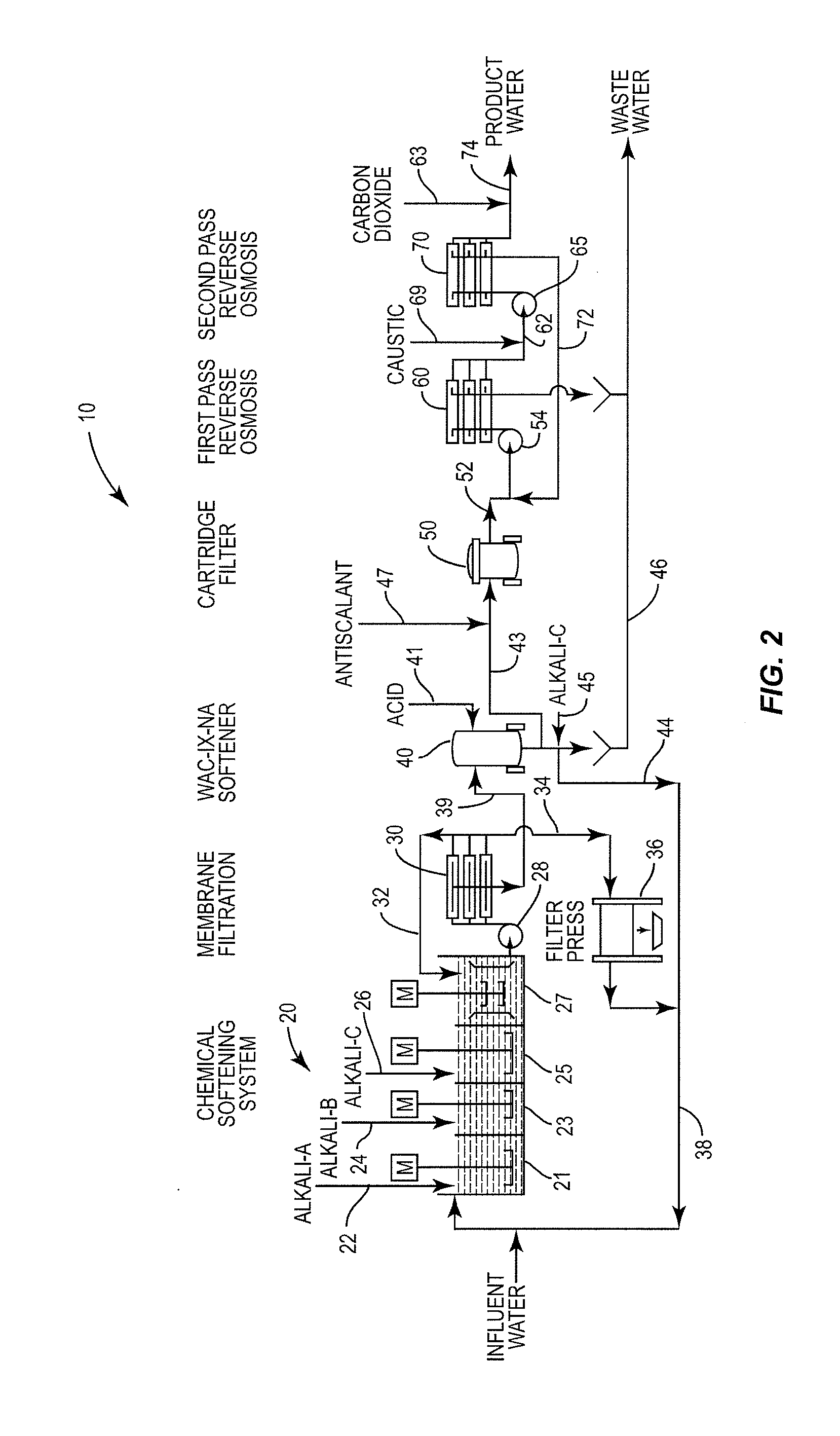Method of Recovering Oil or Gas and Treating the Resulting Produced Water
a technology of oil or gas and produced water, which is applied in the nature of treatment water, multi-stage water/sewage treatment, borehole/well accessories, etc., can solve the problems of difficult to recover across reverse osmosis systems, high concentrations of silica in feed water tend to scale and organics that exceed solubility limits also tend to foul the reverse osmosis membrane. , to achieve the effect of reducing the hardness of the water
- Summary
- Abstract
- Description
- Claims
- Application Information
AI Technical Summary
Benefits of technology
Problems solved by technology
Method used
Image
Examples
Embodiment Construction
[0017]The present invention relates to a wastewater treatment process for treating wastewater or produced water that typically contains organics, silica, boron, dissolved solids and suspended solids. Various types wastewater may contain these contaminants. For example, in the petroleum industry, produced water typically includes these contaminants. As used herein, the term “produced water” means water that is produced along with oil or gas in an oil or gas recovery process. Typically, the oil or gas is separated from the water and the separated water is referred to as produced water which is one type of wastewater. The present invention presents a process that can be utilized to treat various types and forms of wastewaters including, but not limited to, produced water and cooling tower blowdown.
[0018]As described subsequently herein, the process of the present invention entails chemically softening the wastewater in a process that removes hardness. Thereafter the wastewater is subje...
PUM
 Login to View More
Login to View More Abstract
Description
Claims
Application Information
 Login to View More
Login to View More - R&D
- Intellectual Property
- Life Sciences
- Materials
- Tech Scout
- Unparalleled Data Quality
- Higher Quality Content
- 60% Fewer Hallucinations
Browse by: Latest US Patents, China's latest patents, Technical Efficacy Thesaurus, Application Domain, Technology Topic, Popular Technical Reports.
© 2025 PatSnap. All rights reserved.Legal|Privacy policy|Modern Slavery Act Transparency Statement|Sitemap|About US| Contact US: help@patsnap.com



